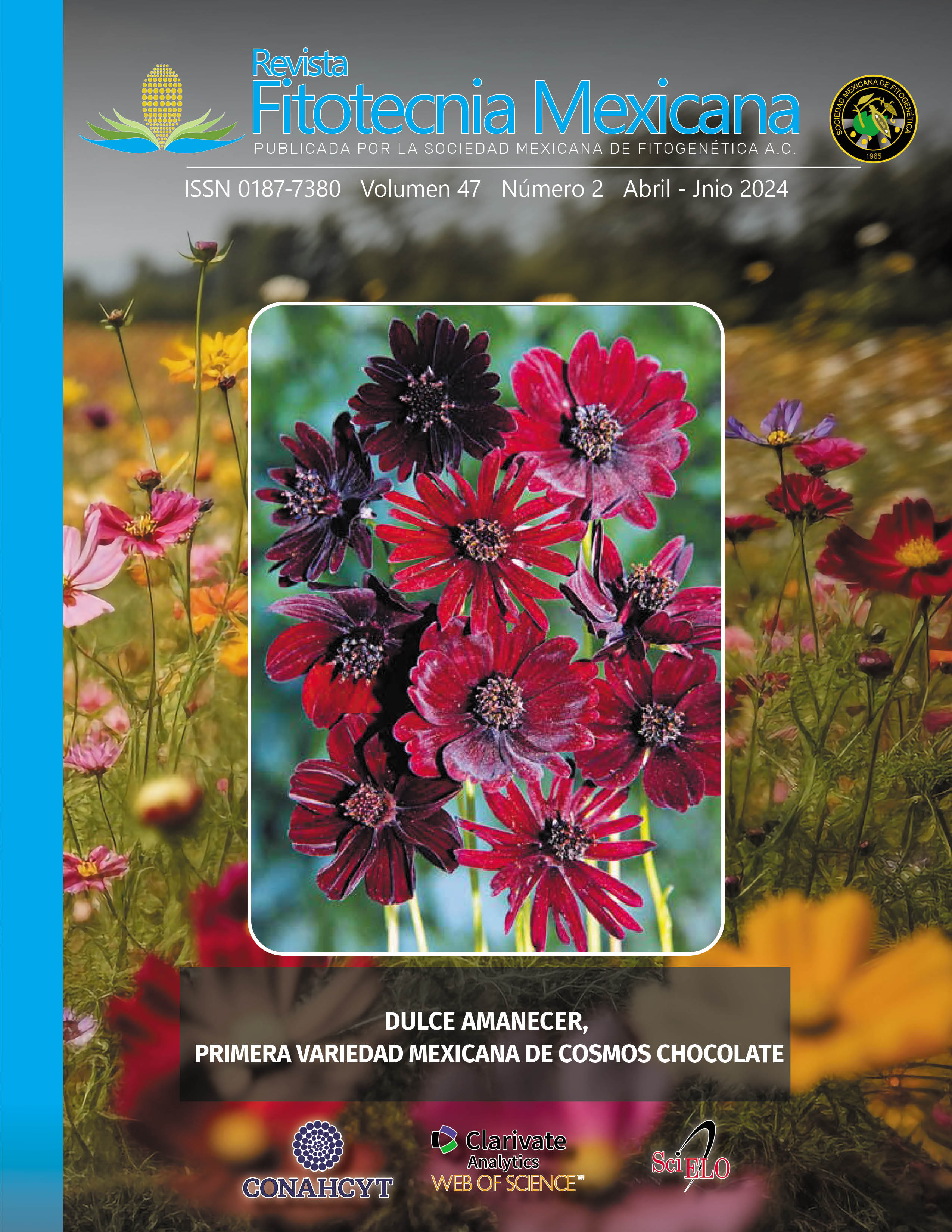RELATIONSHIP OF PHOTOSYNTHETIC EFFICIENCY, STOMATAL CHARACTERIZATION AND FORAGE PRODUCTION IN POPULATIONS OF SIDEOATS GRAMA
Main Article Content
Abstract
Sideoats grama [Bouteloua curtipendula (Michx.) Torr.] has great morphological and genetic variability present in the grassland of Northern Mexico, suggesting the possibility of selection of genotypes resistant to arid zone conditions; however, information on its photosynthetic efficiency and stomatal characteristics is scarce. The objective of this study swas to relate photosynthetic efficiency, stomatal characteristics and forage production in sideoats grama populations. A randomized complete block design with four replications was used. Two hundred and sixteen pots were established in a greenhouse where 51 populations of sideoats grama from the state of Chihuahua, Mexico were evaluated as treatments along with three commercial varieties as controls. Photosynthetic efficiency and stomatal properties were evaluated, and forage accumulation was quantified. Descriptive statistical analyses, correlation analysis, principal component, cluster and multivariate analysis of variance were performed. Means for unregulated heat dissipation (YNO, 0.223) and regulated heat dissipation (YNPQ, 0.447) indicated that those variables are proportional to the photochemical efficiency of photosystem II (YII, 0.330). The maximum and minimum values in forage production were 9.8 and 17.92 g per plant, and those values for plant height were 7.3 and 23 cm, respectively. Positive correlation exists between stomatal area and regulated heat dissipation with plant height and forage production. In the principal component analysis the first two principal components explained 58.8 % of the total variation. Eleven outstanding populations were found in regulated energy dissipation, controlling photoinhibition without jeopardizing plant production.

